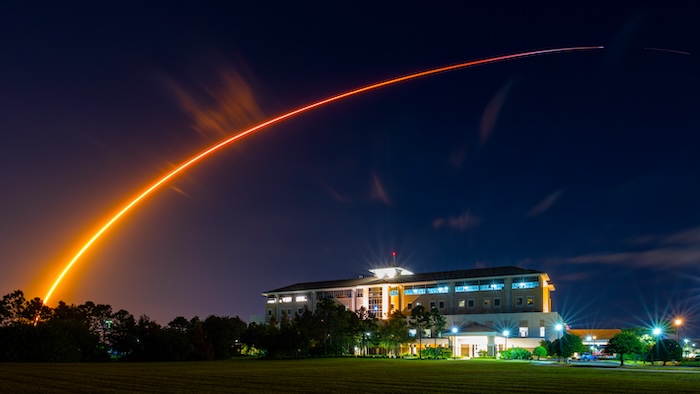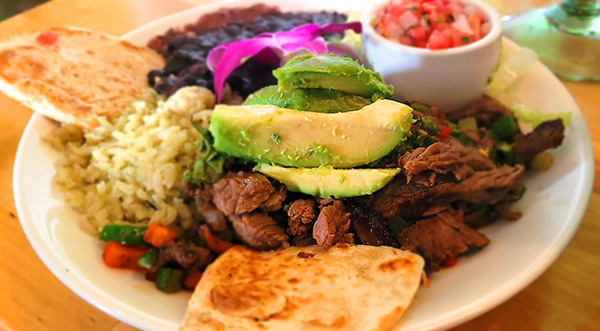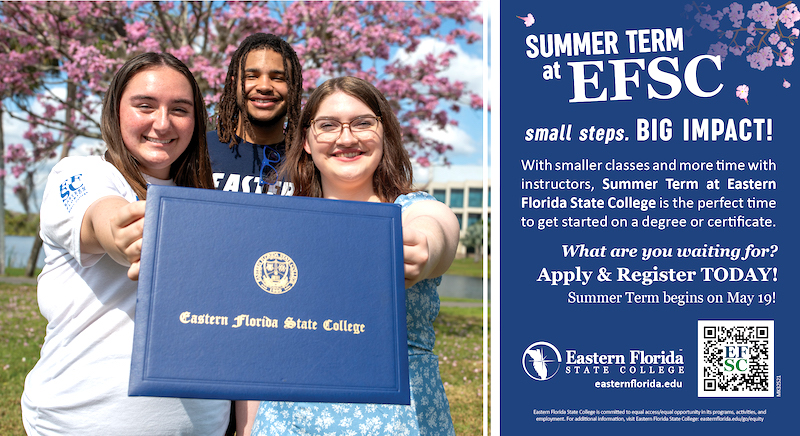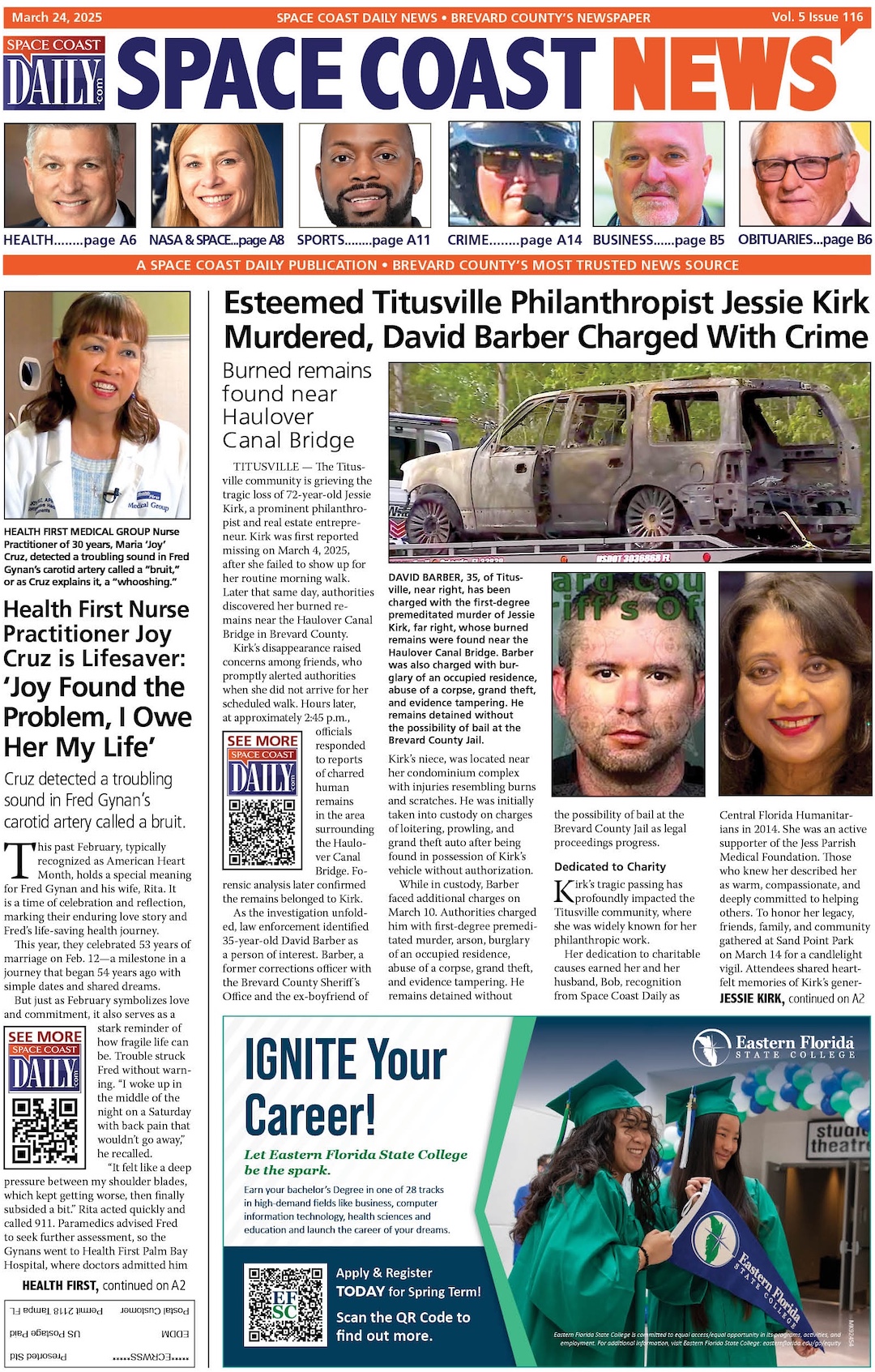The Best Neighborhoods in Albuquerque
By Space Coast Daily // March 19, 2024

Albuquerque, New Mexico, offers a wide range of neighborhoods, each with its unique character and charm. Whether you’re looking for bustling city life or a quiet suburban retreat, Albuquerque has something to offer for everyone.
This article will explore some of the best neighborhoods in Albuquerque, highlighting the perks and lifestyle each area provides.
Downtown Albuquerque
Downtown Albuquerque is currently experiencing a significant transformation, thanks to a multimillion-dollar revitalization effort. This effort aims to enhance the district’s appeal and vibrancy, capitalizing on its bustling nightlife along Central Avenue, the historic Route 66.
The area is becoming a lively hub for nightclubs, theaters, restaurants, and other entertainment venues, serving as a focal point for both locals and visitors. The Albuquerque Convention Center, situated downtown, is close to several major hotels, playing a pivotal role in the city’s ability to host a variety of events and gatherings.
The district is segmented into distinct areas, each with its unique characteristics. The Warehouse District, for instance, preserves the memory of the railroad era through its collection of warehouses.
The Plaza District acts as the city’s central area, housing many of Albuquerque’s large office and government buildings, including the Albuquerque City-County Building and the Convention Center.
The Arts and Entertainment District, centered along Central Avenue, is the heart of downtown’s historic buildings, shopping, dining, and nightlife. Meanwhile, the Casa District offers primarily residential spaces, including several loft apartment buildings, and the Transportation Center District is noted for the Alvarado Transportation Center, central to the city’s public transit system.
Historic Old Town
Historic Old Town Albuquerque, established in 1706, is the heart of Albuquerque’s rich cultural heritage and the original townsite of the city. The area has played a pivotal role throughout Albuquerque’s history, from its early days as a Spanish colonial outpost to its transformation under Mexican and later U.S. governance.
This neighborhood is notable for the central plaza surrounded by historic adobe buildings, which for much of the 18th century, were occupied primarily on Sundays as residents worked on nearby farms. The U.S. acquisition of New Mexico introduced new dynamics, with Old Town serving as a quiet agricultural community that gradually evolved into a bustling urban center following the arrival of the Atchison, Topeka, and Santa Fe Railway in the 1880s. However, the creation of “New Albuquerque” led to a period of decline for Old Town, which was later reversed as the area’s historical value was recognized and preserved.
Today, Old Town is celebrated for its historic adobe architecture and serves as a vibrant tourist attraction, with buildings now housing a variety of shops, restaurants, and galleries.
Presently, Old Town Albuquerque is a destination that embodies the convergence of ancient traditions and modern culture, making it a unique and culturally significant melting pot in the United States.
This area is renowned for hosting over 150 independent shops, restaurants, boutiques, world-class museums, and historic lodging, offering visitors a blend of spicy local and regional cuisine enveloped in old-world charm.
Seasonal entertainment varies from folk art exhibitions to Flamenco dance performances and Mariachi music, showcasing the diverse cultural influences that have shaped the area. With its deep-rooted history and vibrant cultural scene, Old Town Albuquerque remains a must-visit location for those seeking to experience the heart of the American Southwest.
Westside
Westside Albuquerque presents a vibrant community characterized by a blend of educational, economic, and residential dynamics. According to Weichert.com, the area features a diverse workforce and an educational climate that reflects a broad spectrum of achievement levels.
The median income for residents is approximately $44,746, with housing options ranging from studios to four-bedroom homes.
Rental prices are diverse, with studio apartments averaging at $510 and four-bedroom homes at $1,322. The community enjoys a mix of amenities and services, including a smoking ban in workplaces, though not in restaurants and bars.
The crime index is used to compare the risk of certain types of crime against the national average, providing residents and potential movers with a gauge of safety.
The broader Albuquerque city, of which Westside is a part, had a population of 561,008 as of July 2022, according to the U.S. Census Bureau.
This indicates a slight decrease from the 2020 census. The area boasts a high rate of educational attainment, with 90.7% of residents aged 25 and above having at least a high school diploma and 37.8% holding a bachelor’s degree or higher.
The median household income stands at $61,503, with a relatively moderate cost of living, evidenced by a median gross rent of $1,014. Economically, Albuquerque has shown remarkable resilience and growth, especially noted in sectors like arts and entertainment, information, retail trade, and construction.
This economic vitality is partly attributed to significant gains in gross receipts tax (GRT) data, indicating a thriving local economy. The city has also seen employment growth, especially in the construction sector, which outpaced many peer cities in job creation.
Sandia Heights
Sandia Heights, nestled in northern Bernalillo County, New Mexico, at the western base of the Sandia Mountains, offers a blend of tranquil suburban living and natural beauty. The area is defined by its proximity to Albuquerque, allowing residents to enjoy a quieter, more rural lifestyle while still having access to the amenities of a larger city.
With a total area of 1.9 square miles, all of which is land, Sandia Heights provides ample space for its residents, offering breathtaking views and direct access to outdoor activities such as hiking and biking in the surrounding mountains. The population of Sandia Heights was recorded at 3,273 in the 2020 census, reflecting a community that values privacy and spacious living environments.
Real estate in Sandia Heights is notable for its exclusivity and high value, with the median real estate price significantly surpassing the averages in both New Mexico and the wider United States. The neighborhood is characterized by medium to large single-family homes and townhomes, most of which are owner-occupied.
Many homes were constructed between 1970 and 1999, with a considerable number also being built from 2000 onwards. This area is not only appealing for its aesthetic and environmental attributes but also for its strong community bonds and low crime rates.
Sandia Heights stands out for its low rates of children living in poverty, a testament to the community’s prosperity and quality of life. Additionally, a significant portion of the neighborhood’s residents work from home, indicative of a modern, adaptable community that values both comfort and efficiency.
North Campus
North Campus Albuquerque offers a unique living experience, significantly influenced by the presence of the University of New Mexico. This neighborhood is ideal for those with access to a car, scoring an 8/10 for its driving convenience.
Residents enjoy access to parks like the North Campus Community Project or Netherwood Park and have a wealth of educational options with 175 schools in the vicinity. For those seeking higher education opportunities, the University of New Mexico is nearby. Rental options in North Campus are diverse, with 191 rentals available, including 185 pet-friendly options and 32 rentals that include utilities. The average rent for a studio apartment holds steady at $650, providing a range of living situations for residents and newcomers alike.
Real estate in North Campus spans a wide price range, reflecting its diverse housing options from modest homes to luxurious properties. The market includes homes for sale at various price points, catering to a broad spectrum of buyers.
For instance, listings range from $475,000 for a spacious home with multiple bedrooms and baths to properties exceeding $1 million, demonstrating the area’s appeal to both moderate and high-end buyers. This variety ensures that North Campus accommodates a wide range of preferences and budgets, from those seeking their first home to those looking for upscale residences.
Bear Canyon
The Bear Canyon Senior Center in Albuquerque offers a variety of activities and services for the community, including low-cost breakfast and lunch options, with special pricing for seniors. The center operates Monday through Saturday with extended hours on Thursdays.
Membership is available with an annual fee, supporting the continuation of services for active adults.
At Bear Canyon Senior Center, Albuquerque, members enjoy a comprehensive range of services aimed at the active adult community, including various senior-centered activities.
There’s a special focus on providing affordable, nutritious meals with breakfast and lunch options tailored for different age groups, ensuring accessibility and fostering community engagement.
Membership is encouraged to support resource allocation and program funding, with a nominal annual fee that includes a waiver option, highlighting the center’s commitment to inclusivity and support for seniors.
Los Ranchos de Albuquerque
Los Ranchos de Albuquerque, nestled within Bernalillo County, New Mexico, exhibits a blend of rural charm and suburban convenience, reflected in its population and housing market trends. As of the 2022 estimates, the village houses a population of 5,845, showing a slight decrease since the 2020 Census.
The demographic makeup and living conditions in Los Ranchos de Albuquerque underscore its unique character, with a significant proportion of the population (24.7%) being 65 years and over, a higher percentage than in the broader Albuquerque city. The village prioritizes education and connectivity, evidenced by a high percentage of households with broadband Internet subscriptions (91.3%) and an impressive 97.4% of residents aged 25 and over holding at least a high school diploma.
Furthermore, the area boasts a high owner-occupied housing unit rate (77.1%) and a median household income of $67,747, suggesting a stable and affluent community.
The housing market in Los Ranchos de Albuquerque is currently less competitive compared to nearby areas, with homes typically selling for about 2% below list price and going pending in around 26 days.
This slower pace indicates a buyer-friendly market, where multiple offers are rare, and some homes can sell for around list price if they are particularly desirable. The market’s dynamics contrast with Albuquerque’s somewhat competitive nature, reflecting Los Ranchos de Albuquerque’s distinctive appeal to those seeking a less hurried lifestyle.
Additionally, migration trends reveal a fascinating pattern: a significant portion of homebuyers in recent months searched to move out of Los Ranchos de Albuquerque, yet a majority looked to stay within the metropolitan area, highlighting the village’s enduring appeal to its residents.
Taxes and Public Services in Albuquerque
In Albuquerque, the city’s financial operations and tax regulations are structured to support both its residents and the broader community. Key aspects include the Hospitality Fee and Lodgers Tax Ordinances aimed at boosting tourism through the provision of revenues for promoting tourist-related attractions and facilities.
The Gross Receipts Tax Rate Schedule is another crucial component, impacting businesses and consumers citywide. Furthermore, Albuquerque has introduced online platforms for lodging establishments to report revenue and manage lodgers’ tax and hospitality fees, streamlining the process and ensuring compliance with city regulations.
On a broader scale, the New Mexico Taxation and Revenue Department offers comprehensive online services for taxpayers, facilitating electronic filing of taxes which is not only secure but also expedites the refund process.
This move towards digital solutions reflects an effort to improve efficiency and accessibility for all taxpayers in New Mexico. Initiatives such as the Taxpayer Access Point (TAP) system underscore the state’s commitment to leveraging technology to enhance tax administration, providing a user-friendly interface for filing returns, paying liabilities, and checking the status of submissions.
This digital shift is part of a larger trend towards green initiatives and operational efficiency within the state’s financial and administrative sectors.
Downtown
Downtown Albuquerque, the city’s central business district, is a vibrant mix of historical significance and modern revitalization efforts. It’s defined by several districts each with its unique character and offerings.
The area hosts most of the city’s highrise buildings, including the tallest ones like Albuquerque Plaza and the Hyatt Regency Albuquerque. Downtown’s historical landmarks, such as the KiMo Theater and the First National Bank Building, add to the cultural richness of the area.
The district structure facilitates a variety of purposes, from government and legal affairs in the Courthouse District to residential living in the Casa District. This diverse zoning supports a comprehensive urban experience, accommodating entertainment, residential life, and commerce within a condensed geographic area.
Moreover, Downtown Albuquerque has embraced significant multimillion-dollar revitalization projects to enhance its appeal as a hub for nightlife, shopping, dining, and cultural activities along Central Avenue, the former Route 66.
These efforts aim to bolster the area’s economic growth and livability. The district’s accessibility is boosted by the Alvarado Transportation Center, making it a pivotal area for public transit within the city, including bus routes, Amtrak, and the New Mexico Rail Runner Express.
This connectivity, alongside a range of activities and services, from arts and cultural groups to various professional meetings and events, underscores Downtown Albuquerque’s role as a dynamic center for both locals and visitors.
Midtown/University
The Midtown/University area of Albuquerque, centered around the University of New Mexico (UNM), established in 1889, represents a crucial hub for education, culture, and community engagement.
This district has grown significantly since the arrival of the railroad, pushing the city’s expansion further east and establishing UNM as New Mexico’s largest university, sprawled over 600 acres. Today, this area is not just an educational cornerstone but also a thriving community that includes a diverse population, contributing to Albuquerque’s urban-suburban mix feel.
The neighborhood is favored by young professionals and is known for its dynamic interaction between residents and the urban environment.
Contributing to the vibrancy of the Midtown/University area, the Keshet Dance & Center for the Arts serves as a beacon for cultural and artistic expression.
Located in the heart of this neighborhood, Keshet is dedicated to dance, mentorship, and providing a welcoming space for the arts, championing the intersection of arts, artists, and audiences.
With its diverse programs ranging from education and engagement for all ages and abilities, art business classes for entrepreneurs, to arts and justice initiatives, Keshet exemplifies the community’s commitment to fostering a flourishing environment for empowered individuals, nurtured communities, and sustained equity.
The center is an anchor in the Midtown Arts and Entertainment District, reflecting the area’s dedication to creating and sharing contemporary dance while facilitating meaningful community programming.
North Valley
The North Valley of Albuquerque is a captivating area characterized by its lush greenery, rich history, and proximity to the Rio Grande. It offers residents and visitors a blend of rural charm and modern amenities.
The climate in the North Valley is arid, with temperatures typically a bit warmer during the day and slightly cooler at night compared to other parts of Albuquerque. This area experiences hot summers with temperatures often exceeding 100°F, while winters are mild, making it an attractive place for those who enjoy sunny, dry weather year-round.
Culturally and historically, the North Valley is significant, home to two incorporated towns, Los Ranchos de Albuquerque and Corrales, and offering a wide range of outdoor activities, wineries, farmers markets, and peaceful spas.
It’s known for its agricultural contributions and provides a variety of recreational opportunities such as horseback riding, hot air balloon rides, and access to the Rio Grande Nature Center State Park.
The area’s rich tapestry of historic and modern influences is evident in landmarks such as Las Mañanitas and in the architectural styles of homes, which often feature Southwestern adobe and stucco construction.
Best Rural Neighborhoods in Albuquerque
Albuquerque’s diverse neighborhoods offer a rich tapestry of cultural, recreational, and residential options, catering to a variety of lifestyles and preferences. Among these, the North Valley and Los Ranchos de Albuquerque stand out for their unique blend of rural and suburban living.
These areas are characterized by their spacious properties, agricultural roots, and a slower pace of life, which many find appealing. The North Valley, in particular, is celebrated for its picturesque farmlands and local markets that sell fresh produce and artisan goods, fostering a strong sense of community among residents.
Similarly, Los Ranchos offers a rural charm within the city’s limits, providing a tranquil living environment with easy access to Albuquerque’s amenities.
Recently, there has been an observed trend of people moving to these neighborhoods, as indicated by Albuquerque movers who report an increased number of relocations to the North Valley and Los Ranchos. This shift could be attributed to the growing desire for more space, a closer connection to nature, and a quieter lifestyle, while still benefiting from the proximity to urban conveniences.
These neighborhoods’ appeal is further enhanced by Albuquerque’s stable real estate market, making it a favorable time to invest in a home in the city. With its diverse culinary scene, vibrant culture, and abundance of outdoor activities, Albuquerque offers a quality of life that is attracting more residents to its rural neighborhoods.












